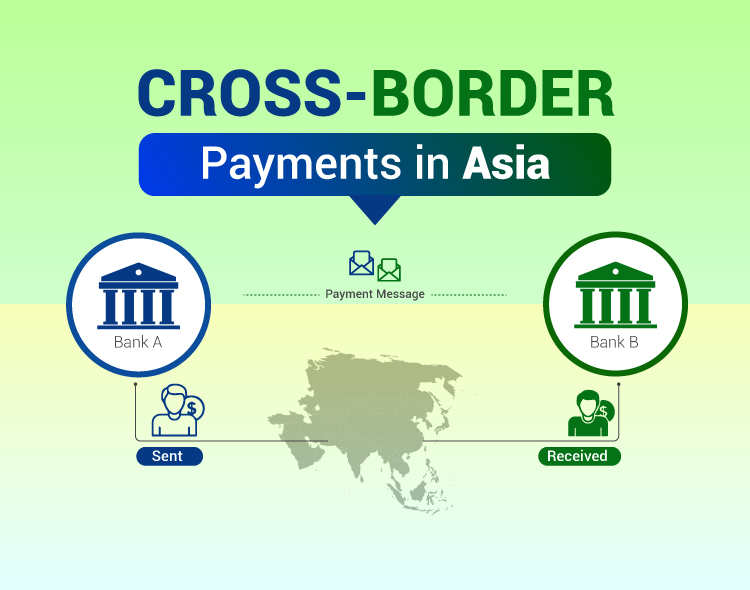Introduction
In this blog, we shall highlight the CBP for Asia.
About 35% of global payment flows occur in Asia, with the rapidly developing digital economy fueling localized areas of expansion.
Hong Kong, Cambodia, Malaysia, the Philippines, and Thailand are merely a handful of the most recent additions to the Asia-Pacific area that have jumped into the real-time payments arena.
Cross-border payments present an impressive revenue potential in the very dynamic Asian financial services sector, driven by changing trade flows, growing e-commerce, and a positive global regulatory agenda. These conditions are ideal for new entrants, who have gained market share through offering services that are both highly functional and cost-efficient.
Statistical Figures
Both business-to-business and business-to-consumer transactions can be conducted online, and over the next five years, international trade is forecast to increase by more than 12–15 percent annually. Multiple regions in Southeast Asia have become important hubs for the digital economy, with Indonesia expected to enjoy annual growth of 25% until 2025.
Take Thailand as an example; the country’s real-time payments market is expected to increase from 3% in 2017 to 65% in 2022, and this only accounts for non-paper-based transactions.
But now that many internet companies have been hit by equity market sell-offs, banks can use their comparative advantages and shifting investor expectations to get back on track.
Latest Read: Can Fintech Survive Without IT Support? Let’s Know With Experts!
Successful international money transfers in the Asian market
Banks and fintech payment service providers in Asia can benefit greatly from the growing demand for cross-border payments and foreign exchange (FX) services in the region.
The Asian Banker’s research and consulting arm, TABInsights, estimates that by 2025, cross-border payment flows in Asia will have reached $150 trillion, up from $97.8 trillion in 2021.
Increased economic connection and rapid improvements in technology are fueling a dramatic growth in the volume of cross-border payments made around the world. An estimated US$156 trillion market is up for grabs between established financial institutions, Big Tech, and fintech startups.
Connecting Singapore and Thailand’s real-time payment systems PayNow and PromptPay in May 2021 was one of the largest successes in Asia. As a result of this agreement, QR (Quick Response) codes can now be used to send and receive money between the two countries.
Although the maximum amount of money that can be transferred in a single transaction is SGD $1,000, the fact that the payer can choose which account to use and how much it will cost them means that the recipient of the funds can replenish their inventory and keep their cash flow healthy on the same day.
Read more: Top 10 Fintech CEO Watchlist
Cross-border payments in real time
There has been a proliferation of alternative payment rails that can process cross-border payments in real-time or very close to real-time. Fintechs, card companies, platform companies, international QR-based payment networks, blockchain networks, and even traditional banks all contribute to this infrastructure.
These tracks have appeared in reaction to modifications in the market, such as choosy consumers, hyper-vigilant pricing and service, increased expectations, and a rise in remittances. However, banks still rely significantly on the SWIFT network and conventional correspondent banking relationships, despite the fact that these new railroads are increasingly vital to cross-border payments because of their competitive cost, ease, speed, and transparency
Conclusion
There is still much to be done, so it’s difficult to predict how the cross-border payments space will evolve. However, one thing is certain: During the pandemic, countries looked into ways to move forward and invest in their payment infrastructure so that, once borders reopen, their users will have a better settlement experience.
Companies and international organizations are working to create regional and interregional laws and payment centers that will streamline international trade and monetary transactions.
As a result of so many options, market competition is heating up, changing the face of international money transfers over time. Banks and fintech companies may work together on one currency corridor but oppose each other on another.
Read : Global Fintech Fest 2023 – Outcomes
The proliferation of alternative payment rails coincides with banks’ efforts to update their IT infrastructure to support ISO 20022 and API-based connection. Banks have an incentive to update their dated legacy IT infrastructure to comply with the new standard (ISO2022), as it is expected to enable 80% of transaction volumes and 87% of transaction value worldwide by 2025. Gains in operational efficiency are anticipated in the form of lower transaction costs, enhanced compliance, and more revenue opportunities.
[To share your insights with us, please write to pghosh@itechseries.com ]
